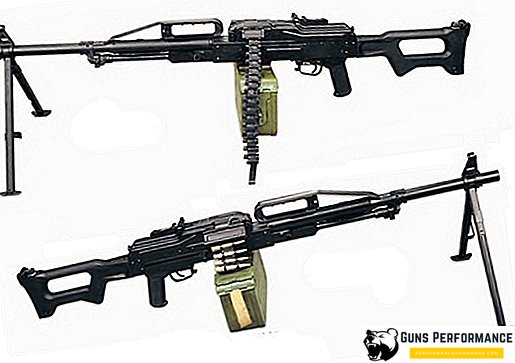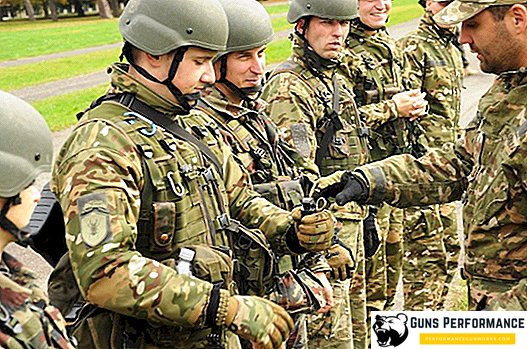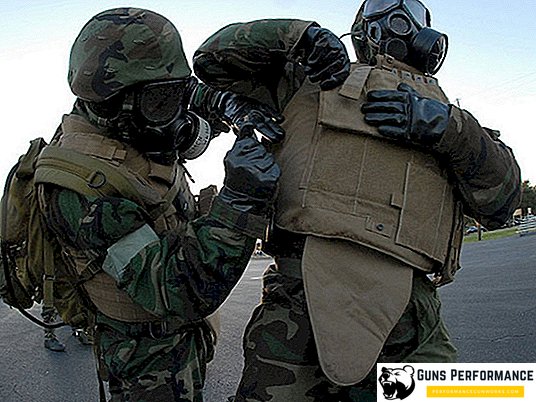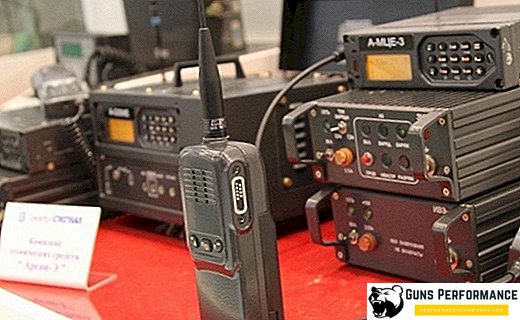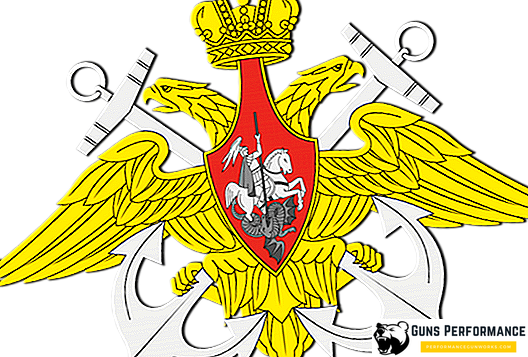
The navy of the Russian Federation is one of the three types of the Armed Forces of our state. Its main task is the armed defense of state interests in the maritime and oceanic theaters of operations. The fleet of Russia is obliged to protect the sovereignty of the state outside its land territory (territorial waters, rights in a sovereign economic zone).
The Russian Navy is considered the successor of the Soviet naval forces, which, in turn, were created on the basis of the Russian Imperial Navy. The history of the Russian Navy is very rich, it has more than three hundred years, during which time it has gone a long and glorious battle road: the enemy has repeatedly dropped the battle flag in front of Russian ships.
In terms of its composition and the number of ships of the Russian Navy, it is considered one of the strongest in the world: in the global ranking, it ranks second after the US Navy.
The Russian Navy includes one of the components of the nuclear triad: submarine nuclear submarines capable of carrying intercontinental ballistic missiles. The current Russian fleet is inferior in its power to the Soviet Navy, many ships currently in service were built during the Soviet period, so they are outdated both morally and physically. However, in recent years, active construction of new ships has been underway and the fleet is annually replenished with new pennants. According to the State Arms Program, until 2020, about 4.5 trillion rubles will be spent on updating the Russian Navy.
The stern flag of the Russian warships and the flag of the naval forces of Russia is the St. Andrew’s flag. It was officially approved by presidential decree of July 21, 1992.

Russian Navy Day is celebrated on the last Sunday of July. This tradition was established by the decision of the Soviet government in 1939.
Currently, the Commander-in-Chief of the Russian Navy is Admiral Vladimir Ivanovich Korolev, and his first deputy (Chief of General Staff) is Vice-Admiral Andrei Olgertovich Volozhinsky.

Aims and objectives of the Russian Navy
Why does Russia need a navy? Already, at the end of the 19th century, the American Vice-Admiral Alfred Mahen, one of the largest naval theorists, wrote that the navy influences politics by the very fact of its existence. And it's hard not to agree with him. For several centuries the borders of the British Empire were fastened by the sides of its ships.
The world ocean is not only an inexhaustible source of resources, but also the most important world transport artery. Therefore, the importance of the Navy in the modern world is hard to overestimate: a country with warships can project military force anywhere in the oceans. Ground troops of any country, as a rule, are limited to their own territory. In the modern world, maritime communications play an essential role. Warships can effectively act on enemy communications, cutting him off from the supply of raw materials and reinforcements.
The modern fleet is distinguished by high mobility and autonomy: ship groups are able to stay in remote areas of the ocean for months. The mobility of ship groupings makes it difficult to strike, including with the use of weapons of mass destruction.

The modern navy has an impressive arsenal of weapons of destruction, which can be used not only against enemy ships, but also to attack ground targets located hundreds of kilometers away from the coastline.
The naval forces as a geopolitical tool are very flexible. The Navy is able to respond to a crisis situation in a very short time.
The composition of the Russian Navy includes an underwater fleet, which has the ability to deliver covert blows to the enemy. And if we talk about submarines with nuclear weapons on board, they are a strategic deterrent factor that can limit the unwanted activity of any potential adversary. It is very difficult to detect missile submarines, and in the case of hostile actions against Russia they can strike at the aggressor with monstrous force.

Another distinctive feature of the Navy as a global military and political tool is its universality. Here are just some of the tasks that the navy is capable of solving:
- demonstration of military forces and the flag;
- combat duty;
- protection of own sea communications and coast protection;
- peacekeeping and anti-piracy operations;
- humanitarian missions;
- the transfer of troops and their supply;
- waging conventional and nuclear war at sea;
- providing strategic nuclear deterrence;
- participation in strategic missile defense;
- conducting amphibious operations and combat operations on land.
Sailors can act very effectively on land. The most graphic example is the US Navy, which has long been the most powerful and universal instrument of American foreign policy. To conduct large-scale ground operations on land, the fleet needs a powerful airborne and land component, as well as a developed rear infrastructure capable of supplying expeditionary forces thousands of kilometers away from its borders.
Russian sailors repeatedly had to participate in land operations, as a rule, which took place on their native land and were defensive in nature. As an example, the participation of naval sailors in the battles of the Great Patriotic War, as well as the first and second Chechen campaigns in which units of the marines fought.
The Russian fleet performs many tasks in peacetime. Warships ensure the safety of economic activities in the World Ocean, monitor the strike ship groups of potential adversaries, cover the patrol areas of submarines of a potential enemy. The ships of the Russian Navy are involved in the protection of the state border, sailors can be attracted to eliminate the consequences of man-made disasters and natural disasters.
The composition of the Russian Navy
As of 2014, fifty nuclear submarines were part of the Russian fleet. Fourteen of them are strategic missile submarines, twenty-eight submarines with missile or torpedo weapons and eight submarines have a special purpose. In addition, the fleet includes twenty diesel-electric submarines.
The surface fleet consists of one heavy aircraft carrier cruiser (aircraft carrier), three nuclear missile cruisers, three missile cruisers, six destroyers, three corvettes, eleven large anti-submarine ships, twenty-eight small anti-submarine ships. The Russian Navy also includes seven patrol vessels, eight small rocket ships, four small artillery ships, twenty-eight rocket boats, more than fifty minesweepers of various types, six artillery boats, nineteen large landing ships, two air-cushion landing ships, more than two dozens of landing boats.
History of the Navy of the Russian Federation
Already in the 9th century, Kievan Rus had a fleet that allowed it to conduct successful sea voyages to Constantinople. However, these forces are hard to call the regular Navy, the ships were built just before the campaigns, their main task was not the battles at sea, but the delivery of ground troops to their destination.
Then there were centuries of feudal fragmentation, invasions of foreign conquerors, overcoming internal turmoil - besides, the Moscow principality had no access to the sea for a long time. The only exception was Novgorod, which had access to the Baltic and led successful international trade, being a member of the Hanseatic League, and even made sea voyages.
The first warships in Russia began to be built during the time of Ivan the Terrible, but then the Moscow principality plunged into the Troubles, and the navy was again forgotten for a long time. Warships were used during the war with Sweden of 1656-1658, during this campaign the first documented Russian victory at sea was won.

The Emperor Peter the Great is considered the creator of the regular Russian navy. It was he who determined Russia's access to the sea as a primary strategic task and began the construction of warships at a shipyard on the Voronezh River. And already during the Azov campaign, the Russian battleships took part in a massive naval battle for the first time. This event can be called the birth of the regular Black Sea Fleet. A few years later the first Russian warships appeared in the Baltic. New Russian capital St. Petersburg has long become the main naval base of the Baltic Fleet of the Russian Empire.
After Peter's death, the situation in domestic shipbuilding deteriorated significantly: the new ships were practically not laid, and the old ones gradually fell into disrepair.
The situation became critical in the second half of the 18th century, during the reign of Empress Catherine II. At this time, Russia pursued an active foreign policy and was one of the key political players in Europe. The Russian-Turkish wars, which lasted for half a century with short breaks, forced the Russian leadership to devote special attention to the development of the navy.

During this period, the Russian sailors managed to win several glorious victories over the Turks, a large Russian squadron made the first long march to the Mediterranean Sea from the Baltic, the empire conquered vast lands in the northern Black Sea coast. The most famous Russian naval commander of that period was Admiral Ushakov, who commanded the Black Sea Fleet.
At the beginning of the XIX century, the Russian fleet was the third in the world in the number of ships and artillery power after Britain and France. Russian sailors made several round-the-world trips, made a significant contribution to the study of the Far East, the Russian navy sailors Bellingshausen and Lazarev in 1820 opened the sixth continent - Antarctica.
The most important event in the history of the Russian fleet was the Crimean War of 1853-1856. Because of a number of diplomatic and political failures, Russia had to fight against a whole coalition, which included the United Kingdom, France, Turkey, and the Sardinian kingdom. The main battles of this war took place on the Black Sea theater of military operations.

The war began with a brilliant victory over Turkey in a naval battle at Sinop. The Russian fleet under the leadership of Nakhimov utterly defeated the enemy. However, in the future, this campaign was unsuccessful for Russia. The British and French had a better fleet, they were seriously ahead of Russia in the construction of steam vessels, and had modern small arms. Despite the heroism and excellent training of Russian sailors and soldiers, after a long siege, Sevastopol fell. According to the terms of the Paris Peace Treaty, Russia was no longer allowed to have the Black Sea navy.

The defeat in the Crimean War led to the intensification of the construction of steam-powered warships in Russia: battleships and monitors.
The creation of a new steam armored fleet continued actively in the late XIX - early XX century. To overcome the backlog of the leading maritime world powers, the Russian government bought new ships abroad.
The most important milestone in the history of the Russian fleet was the Russo-Japanese war of 1904-1905. The two strongest powers of the Pacific region, Russia and Japan, entered into a fight for control of Korea and Manchuria.

The war began with a sudden attack of the Japanese on the harbor of Port Arthur - the largest base of the Russian Pacific Fleet. On the same day, the superior forces of the Japanese ships in the port of Chemulpo sank the cruiser Varyag and the gunner Koreyan.
After several battles lost by the Russian ground forces, Port Arthur fell, and the ships in its harbor were sunk by enemy artillery fire or their own crews.
The second Pacific squadron, assembled from ships of the Baltic and Black Sea fleets, which went to the aid of Port Arthur, suffered a crushing defeat near the Japanese island of Tsushima.

The defeat in the Russian-Japanese war was a real catastrophe for the Russian fleet. He lost a large number of pennants, many experienced sailors died. Only at the beginning of the First World War, these losses were partially compensated. In 1906, the first submarines appeared in the Russian fleet. In the same year, the Main Naval Headquarters was established.
In the First World War, Germany was the main opponent of Russia on the Baltic Sea, and the Ottoman Empire in the Black Sea theater of military operations. In the Baltic, the Russian fleet followed defensive tactics, since the German fleet surpassed it both quantitatively and qualitatively. Actively used mine weapons.
The Black Sea Fleet since 1915 almost completely controlled the Black Sea.
The revolution and the civil war that broke out after it became a real catastrophe for the Russian fleet. The Black Sea Fleet was partially captured by the Germans, some of its ships were transferred to the Ukrainian People's Republic, then they fell into the hands of the Entente. Part of the ships was flooded by order of the Bolsheviks. The foreign powers occupied the coast of the North Sea, the Black Sea and the Pacific Coast.
After the Bolsheviks came to power, the gradual restoration of the naval forces began. In 1938 a separate type of armed forces appeared - the Navy of the USSR. Before the beginning of World War II, it was a very impressive force. Especially many in its composition were submarines of various modifications.
The first months of the war were a real catastrophe for the Soviet Navy. Several key military bases (Tallinn, Hanko) were left. The evacuation of warships from the Hanko naval base resulted in heavy casualties due to enemy mines. The main battles of the Great Patriotic War took place on land, so the Soviet Navy sent more than 400 thousand sailors to the ground forces.

After the end of the war, the period of confrontation between the Soviet Union with its satellites and the NATO bloc led by the United States began. At this time, the Soviet Navy reached the peak of its power, both in the number of ships and in their qualitative characteristics. A huge amount of resources was allocated for the construction of the nuclear submarine fleet, four aircraft carriers were built, a large number of cruisers, destroyers and missile frigates (96 units at the end of the 80s), more than a hundred landing ships and boats. The ship structure of the Soviet Navy in the mid-80s consisted of 1,380 warships and a large number of auxiliary vessels.

The collapse of the Soviet Union led to disastrous consequences. The Soviet Navy was divided between the Soviet republics (although most of the ship’s personnel went to Russia), because of the under-funding, most of the projects were frozen, and part of the shipbuilding enterprises remained abroad. In 2010, the Russian Navy consisted of only 136 warships.
Structure of the Russian Navy
The Russian Navy includes the following forces:
- surface;
- underwater;
- naval aviation;
- coastal troops.
Naval aviation consists of coastal, carrier-based, tactical and strategic.

Russian Navy Associations
The Russian Navy consists of four operational-strategic alliances:
- Baltic Fleet of the Russian Navy, its headquarters is in Kaliningrad
- The Northern Fleet of the Russian Navy, its headquarters is located in Severomorsk
- The Black Sea Fleet, its headquarters is located in Sevastopol, belongs to the Southern Military District
- The Caspian flotilla of the Russian Navy, headquartered in Astrakhan, is part of the Southern Military District.
- The Pacific Fleet, headquartered in Vladivostok, is part of the Eastern Military District.
The Northern and Pacific fleets are the strongest in the Russian Navy. It is here that submarines-carriers of strategic nuclear weapons are based, as well as all surface and submarines with a nuclear power plant.
The only Russian aircraft carrier, the Admiral Kuznetsov, is based in the Northern Fleet. If new aircraft carriers are built for the Russian fleet, then, most likely, they will also be deployed in the Northern Fleet. This fleet is part of the United Strategic Command "North".
At present, the Russian leadership is paying a lot of attention to the Arctic. This region is controversial, besides a huge amount of minerals has been explored in this region. Probably, in the coming years, the Arctic will become the “apple of discord” for the world's largest states.

The Northern Fleet includes:
- TAKR "Admiral Kuznetsov" (project 1143 "Krechet")
- two nuclear missile cruisers of the project 1144.2 Orlan, Admiral Nakhimov and Peter the Great, which is the flagship of the Northern Fleet
- missile cruiser "Marshal Ustinov" (project "Atlant")
- four BOD project 1155 "Frigate" and one BOD project 1155.1.
- two destroyers of the project 956 "Sarych"
- девять малых боевых кораблей, морские тральщики разных проектов, десантные и артиллерийские катера
- четыре больших десантных корабля проекта 775.
Основной силой Северного флота являются подводные лодки. В их число входит:
- Десять атомных подводных лодок, вооруженных межконтинентальными баллистическими ракетами (проекты 941 "Акула", 667БДРМ "Дельфин", 995 "Борей")
- Четыре атомные подводные лодки, вооруженные крылатыми ракетами (проекты 885 "Ясень" и 949А "Антей")
- Четырнадцать атомных субмарин с торпедным вооружением (проекты 971 "Щука-Б", 945 "Барракуда", 945А "Кондор", 671РТМК "Щука")
- Восемь дизельных подлодок (проекты 877 "Палтус" и 677 "Лада"). Кроме того, имеется в наличие семь атомных глубоководных станций и экспериментальная подводная лодка.
Также в состав СФ входит морская авиация, войска береговой обороны и подразделения морской пехоты.
В 2007 году на архипелаге Земля Франца-Иосифа начато строительство военной базы "Арктический трилистник". Корабли Северного флота принимают участие в сирийской операции в составе Средиземноморской эскадры российского флота.

Тихоокеанский флот. На вооружении это флота имеются подводные корабли с атомными силовыми установками, вооруженные ракетами и торпедами с ядерной боевой частью. Этот флот разделен на две группировки: одна базируется в Приморье, а другая - на Камчатском полуострове. В состав Тихоокеанского флота входят:
- Ракетный крейсер "Варяг" проекта 1164 "Атлант".
- Три БПК проекта 1155.
- Один эсминец проекта 956 "Сарыч".
- Четыре малых ракетных корабля проекта 12341 "Овод-1".
- Восемь малых противолодочных кораблей проекта 1124 "Альбатрос".
- Торпедные и противодиверсионные катера.
- Тральщики.
- Три больших десантных корабля проекта 775 и 1171
- Десантные катера.
В состав подводных сил Тихоокеанского флота входят:
- Пять подводных ракетоносцев, вооруженных стратегическими межконтинентальными баллистическими ракетами (проекта 667БДР "Кальмар" и 955 "Борей").
- Три атомные подводные лодки с крылатыми ракетами проекта 949А "Антей".
- Одна многоцелевая субмарина проекта 971 "Щука-Б".
- Шесть дизельных подлодок проекта 877 "Палтус".
В состав Тихоокеанского флота входят также морская авиация, береговые войска и подразделения морской пехоты.

Черноморский флот. Один из старейших флотов России с долгой и славной историей. Однако в силу географических причин его стратегическая роль не столь велика. Этот флот участвовал в международной кампании по противодействию пиратству в Аденском заливе, в войне с Грузией в 2008 году, в настоящее время его корабли и личный состав задействован в сирийской кампании.
Ведется строительство новых надводных и подводных судов для Черноморского флота.
В состав этого оперативно-стратегического объединения российского ВМФ входят:
- Ракетный крейсер проекта 1164 "Атлант" "Москва", который является флагманом ЧФ
- Один БПК проекта 1134-Б "Беркут-Б" "Керчь"
- Пять сторожевых кораблей дальней морской зоны разных проектов
- Восемь больших десантных кораблей проектов 1171 "Тапир" и 775. Они объединены в 197-я бригада десантных кораблей
- Пять дизельных подводных лодок (проекты 877 "Палтус" и 636.3 "Варшавянка")
- Три малых противолодочных корабля проекта 1124М "Альбатрос-М"
- Тральщики
- Противодиверсионные катера, ракетные катера, десантные и малые ракетные катера
- Патрульные корабли.

В состав Черноморского флота также входит морская авиация, береговые войска и подразделения морской пехоты.
Балтийский флот. После распада СССР БФ оказался в очень сложном положении: значительная часть его баз оказалась на территории иностранных государств. В настоящее время Балтийский флот базируется в Ленинградской и Калининградской области. Из-за географического положения стратегическое значение БФ также ограничено. В состав Балтийского флота входят следующие корабли:
- Эсминец проекта 956 "Сарыч" "Настойчивый", который является флагманом БФ.
- Два сторожевых корабля дальней морской зоны проекта 11540 "Ястреб". В отечественной литературе их часто называют фрегатами.
- Четыре сторожевых корабля ближней морской зоны проекта 20380 "Стерегущий", которые в литературе иногда называют корветами.
- Десять малых ракетных кораблей (проект 1234.1).
- Четыре больших десантных кораблей проекта 775.
- Два малых десантных корабля на воздушной подушке проекта 12322 "Зубр".
- Большое количество десантных и ракетных катеров.
На вооружении Балтийского флота имеется две дизельные подводные лодки проекта 877 "Палтус".
Каспийская флотилия. Каспийское море - внутренний водоем, который в советский период омывал берега двух стран - Ирана и СССР. После 1991 года в этом регионе появилось сразу несколько независимых государств, и обстановка серьезно осложнилась. Акваторию Каспийского международный contract между Азербайджаном, Ираном, Казахстаном, Россией и Туркменистаном, подписанный 12 августа 2018 года определяет как зону, свободную от влияния НАТО.
В состав Каспийской флотилии РФ входят:
- Сторожевые корабли ближней морской зоны проекта 11661 "Гепард" (2 единицы).
- Восемь малых кораблей разных проектов.
- Десантные катера.
- Артиллерийские и антидиверсионные катера.
- Тральщики.

Перспективы развития ВМС
Военный флот - очень дорогостоящий вид вооруженных сил, поэтому после распада СССР практически все программы, связанные со строительством новых кораблей, были заморожены.
Ситуация начала исправляться только во второй половине «нулевых». Согласно Государственной программе вооружений, до 2020 года ВМФ РФ получит около 4,5 трлн рублей. В планах российских корабелов - выпустить до десяти стратегических ядерных ракетоносцев проекта 995 и такое же количество многоцелевых подлодок проекта 885. Кроме того, продолжится строительство дизель-электрических субмарин проектов 63.63 "Варшавянка" и 677 "Лада". Всего планируется построить до двадцати подводных кораблей.
ВМФ планирует закупить восемь фрегатов проекта 22350, шесть фрегатов проекта 11356, более тридцати корветов нескольких проектов (некоторые из них еще только разрабатываются). Кроме того, планируется строительство новых ракетных катеров, больших и малых десантных кораблей, тральщиков.

Разрабатывается новый эсминец с ядерной силовой установкой. Флот заинтересован в покупке шести таких кораблей. Их планируют оснастить системами противоракетной обороны.
Много споров вызывает вопрос дальнейшей судьбы российского авианосного флота. Нужен ли он? "Адмирал Кузнецов" явно не соответствует современным требованиям, да и с самого начала этот проект оказался не самым удачным.
Всего до 2020 года ВМФ РФ планирует получить 54 новых надводных корабля и 24 субмарины с ЯЭУ, большое количество старых судов должно пройти модернизацию. Флот должен получить новые ракетные комплексы, которые смогут вести стрельбу новейшими ракетами "Калибр" и "Оникс". Этими комплексами планируют оснастить ракетные крейсера (проект "Орлан"), подводные лодки проектов "Антей", "Щука-Б" и "Палтус".



